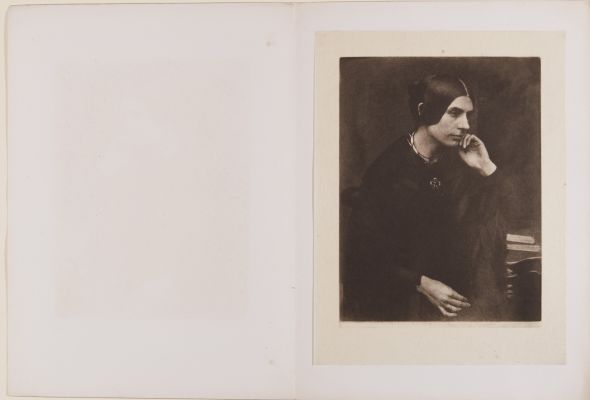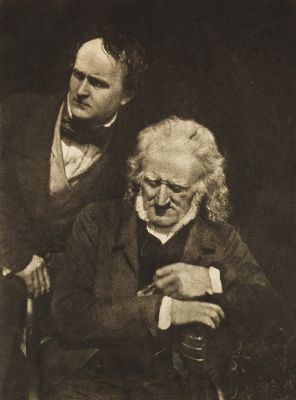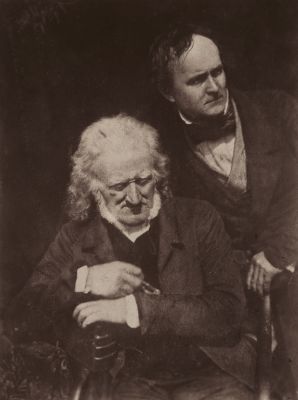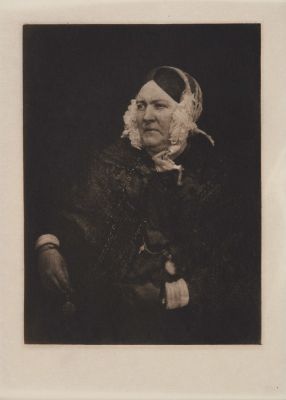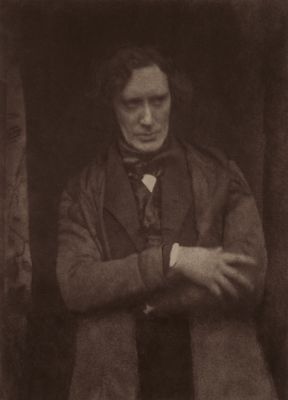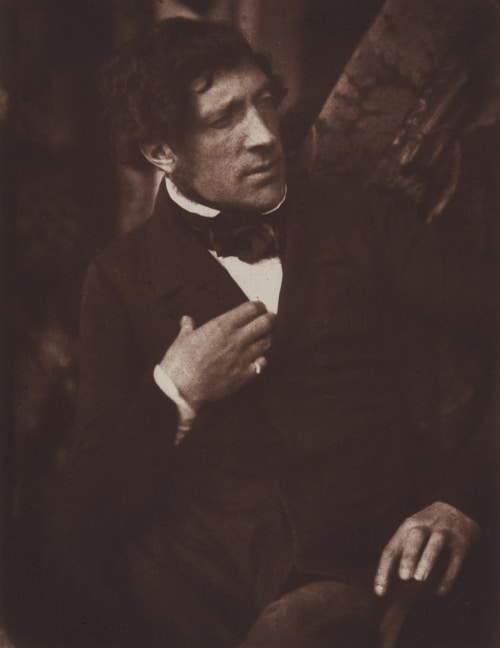
Title
William Leighton LeitchArtists
Hill, David Octavious (Scottish, 1802-1870)Adamson, Robert (Scottish, 1821-1848)Date
1845 plate (1843-1847 negative)Process
Carbon PrintAtelier
Jessie BetramImage Size
19.3 x 15 cm
In 1872, Archibald Burns, an established photographer who had collaborated with Hill took over Rock House, Hill & Adamson’s original studio. Four years later, Alexander Inglis acquired the studio, originally operating under Burns’ name before reverting to his own. His son Francis Caird Inglis took over the business in 1904; he continued to operate Rock House until his death in 1940 and his son maintained the business until 1945. A significant amount of Hill & Adamson’s negatives and prints had remained at Rock House, and at some point Alexander Inglis or his son had Jesse Batram produce a series of carbon prints from some of the negatives, including this one. In 1941, the pioneering photohistorian and collector, Robert O. Dougan, approached Francis Caird Inglis’ widow and arranged to purchase all of the material relating to Hill & Adamson. Dougan arranged to sell the collection in its entirety to the University of Glasgow Library in 1953.
References
An Early Victorian Album, Alfred A Knopf, New York, 1976, pg 162
Stevenson, Sara, David Octavius Hill and Robert Adamson, Catalogue of their Calotypes taken between 1843 and 1847 in he Collection of the Scottish National Portrait Gallery, pg 198
At The Still Point, Photographs From The Manfred Heiting Collection, Vol 1, Cinubia, 1995, pl 25
Katherine Michaelson, David Octavius Hill and Robert Adamson, The Scottish Arts Council, Edinburgh, 1970, Pl 21
Sara Stevenson, Hill & Adamson’s The Fishermen and Women of the Firth of Forth, Scottish National Portrait Gallery, 1991, Edinburgh, pl 45
The History of Photography Archive, The Patrick Montgomery Collection
